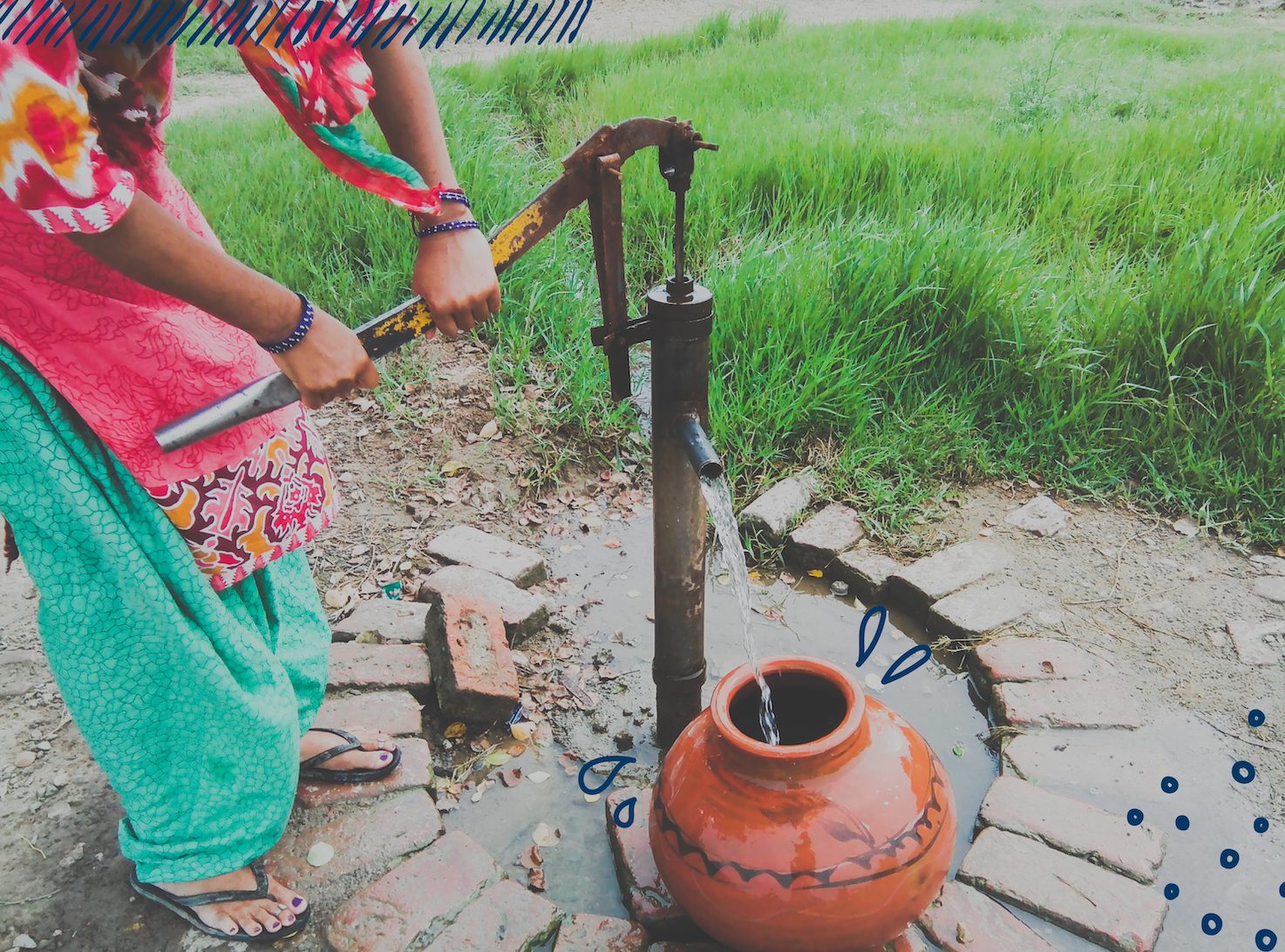Groundwater crises threaten the poor in India
Global water issues in your inbox
Stay up to date on SIWI's work and related topics from around the world.
Sign up to our newsletter“This should be another wake-up call that India needs to start taking its groundwater situation much more seriously. It is not just a water problem, but a livelihood problem. And it is about to get much worse,”
When Dr Veena Srinivasan and her colleagues Tejasvi Hora and Nandita B Basu carried out research in the field, they kept hearing the same stories about disappearing groundwater in southern India too, where the official numbers indicated rising water levels. “We just couldn’t understand this discrepancy. Farmers were killing themselves to get out of a terrible situation, but in the high-end journals we read stories based on official data that described how things were getting better, thanks to rainfall and successful government interventions. It just didn’t make sense,” Veena Srinivasan says.
Eventually they found what seems like a plausible but worrying explanation. In the article The Groundwater Recovery Paradox in South India, published in the publication Geophysical Research Letters, the researchers describe how the numbers had become skewed because wells that went dry were subsequently removed from the data set. The groundwater trend assessment methods most frequently used have turned out to be less suitable for the hard-rock aquifer systems that characterize southern India.
“This should be another wake-up call that India needs to start taking its groundwater situation much more seriously. It is not just a water problem, but a livelihood problem. And it is about to get much worse,” Veena Srinivasan says.
The World Bank and the government think tank NITI Aayog point to several trends that could exacerbate the current crisis. For starters, the number of Indians could rise to 1.7 billion by 2050. With that comes growing demand for water, food, and consumer goods, as well as an increase in pollution and wastewater. The United Nations also estimates that over 400 million Indians will have moved to cities by 2050. In the same time period, climate change will make India much more susceptible to extreme weather events and unpredic- table monsoons.
“It is important to emphasize that India’s current groundwater depletion is not primarily caused by climate change; manmade interventions are much more important. But climate change exacerbates the situation, and in a more unpredictable climate, we will really need groundwater as a buffer. Instead we have wasted much of it through mismanage- ment. It’s like burning your insurance policy right before the fire,” Veena Srinivasan states.
She does not feel that India is prepared for the challenges ahead. Many incentives remain in place that encourage wasteful practices, including massive use of irrigation and pesticides to grow very thirsty crops such as rice. Most waste- water is released untreated into nature which is one reason why 70 per cent of the country’s freshwater is polluted.
“In a more unpredictable climate, we will really need groundwater as a buffer. Instead we have wasted much of it through mismanagement. It’s like burning your insurance policy right before the fire.”
In a recent article, written together with David Blakeslee and Ram Fishman, Veena Srinivasan also calls for more research on suitable adaptation strategies. A compounding factor is the country’s groundwater regulation, which she de- scribes as ‘fundamentally flawed’. “The traditional approach to groundwater regulation in India is not only fragmented between several different national agencies and the state level, we also tend to look at surface water separately from groundwater,” Veena Srinivasan says.
In an article written together with Sharachchandra Lele, she argues that this often leads to mismanagement. When decision-makers disregard the integral link between surface and groundwater, they may, for example, opt to “solve” groundwater depletion by building a dam to inject water directly into an aquifer, with detrimental effects for rivers and wetlands in the area.
Veena Srinivasan would like to see much more collaboration between different agencies and an increase in monitoring of both surface and groundwater, so that decision-makers can plan based on hard facts and data. “When we know how much groundwater we have, it will be much easier to regulate and create the right incentives at district and aquifer level. For that, we also need a mechanism to allocate who gets what water. It will not be easy, but we don’t really have much choice. We must protect the groundwater we have,” Veena Srinivasan concludes.
This article originally appeared in Waterfront in 2020. Read full issue
The 2022 theme for World Water Day, set by UN Water, is Groundwater.
India’s groundwater crisis in numbers
- Groundwater overuse or overexploitation is defined as a situation in which, over a period of time, the average extraction rate from aquifers is greater than the average recharge rate.
- Groundwater contamination is the presence of pollutants such as bacteria, phosphates and heavy metals from human activities including domestic sewage.
- In parts of India, high levels of arsenic, fluoride, nitrate, and iron are also naturally occurring in ground- water, with concentrations likely to rise as water tables fall.
- India is home to 17% of the global population but only 4% of its water resources.
- 820 million Indians face high to extreme water stress.
- 200,000 Indians die every year due to inadequate water, sanitation and hygiene.
Get to know Groundwater
Groundwater has been out of sight and out of mind for too long. When we protect groundwater we save lives and ecosystems, improve health, reduce hunger and tackle climate change all at once.
Learn more








